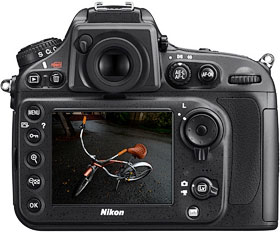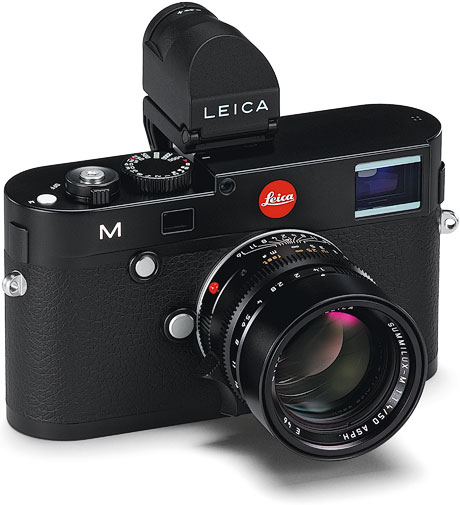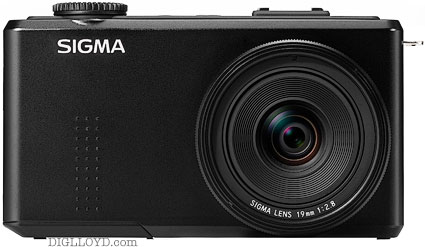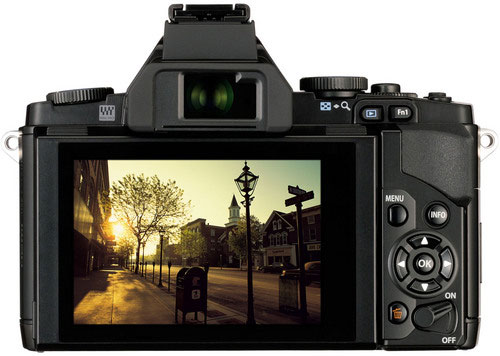Five Appealing Cameras
The first decision point for me is which cameras to own, which ones have ongoing value for my business (e.g., what is mandatory for coverage on this site), and also which ones I prefer to shoot.
The short list: Nikon D800E, Canon 5D Mark III, Olympus E-M5, Sigma DP1 / DP2 Merrill, Sony RX100. The Fuji X and Sony NEX cameras remain off that list for now, but over the next year I will probably be obliged to own one body of each line for continuing coverage in Guide to Mirrorless. But that is a business decision, not necessarily a desire to own or shoot those cameras which for me don’t hit any sweet spot combination on either image quality or ergonomics. And I hope to see new and improved models before investing in them.
So if I’m heading out and I want to take a camera— which one? This involves the nature of the outing, and thus what follows are five “keepers”, each having its own appeal, depending on the nature of the outing or trip.
Sometimes a big/small combination is useful: D800E + Sigma DP Merrill, or Leica M240 + Sigma DP Merrill. Or Sony RX100. What I find much less interesting is a DSLR plus DSLR-like camera (eg Nikon D800E + Olympus E-M5). That said, I have been known to shoot in the field with a D800E and Leica M; this can be very handy because of lens options. But I deem it confusing/overlapping in general; the big/small option lends itself to leaving the big camera in the bag until really needed.
But if I had to pick one camera that puts it all together in combination: a priority on minimizing size/weight but also insisting on very high image sharpness and minimizing “annoyances”, one dark horse emerges: the Sigma DP1 Merrill. Adding cost into the equation, the matter is settled, even if one buys both the DP1 and DP2 Merrill. Be clear that the foregoing is a forced distillation, so it must not be misinterpreted as even being viable for some uses. For example, battery life might preclude the DP Merrill for, say, a weeklong backpacking trip (what a pity). And it certainly is not for fast-moving photography. Etcetera. Tools are specific to the task.
The five cameras that follow are my picks (the Canon 5D Mark III, although mentioned ealier, is a “must have” for business reasons, e.g., to shoot EF lenses).
Nikon D800 — best all around DSLR
For serious versatility including a tripod: the Nikon D800E or D800. Unbeatable except when bulk/weight are priorities and/or for the simple fact that it attracts attention (“sir, we don’t allow professional photography here”).
The D800E is easily the best general-purpose DSLR on the market today. Image quality is unimpeachable and can stand up against even medium format bodies and trumps any other DSLR except in contrived comparisons (e.g., actual pixels against the Nikon D4 but forgetting to compare after downsampling the D800E).
The D800E has its ergonomic downsides: mainly bulk/weight, but also (for critical work) mangled Live View (can be dealt with) and a truly awful focusing screen for manual focus.
Leica M240 — relatively compact with full-frame quality
The Leica M240 falls under the “serious” shooting banner, but in spite of being relatively compact, it is also too large and heavy for things like cycling or even casual outings, especially with the EVF attached. The Leica M240 is a D800E alternative which is more compact and lighter and hence ideal for some types of travel or hiking; an entire kit with 3-4 lenses might still weigh less than a D800E kit with 1 lens.
The Leica M9 has been too difficult a camera to qualify for mainstream use, but it had a place for me nonetheless. The Leica M9 and M-E suffer from compositional and focus issues by having no Live View and no way to verify critical focus even after making the exposure, but I expect that the Leica M240 will change all that and thus make Leica M a viable camera for photographers that could not reliably focus the M9 rangefinder (those with eyesight issues in particular, e.g. mostly older shooters), as well as solving the compositional and critical focus challenges (via Live View).
The Leica M remains one of the best camera designs out there in terms of straightforward operation, and now with Live View the compositional and focusing challenges might now go away. My hunch is that the Leica M240 will have enormous appeal for any one looking for a top grade full-frame compact travel/hiking kit.
To some extent as with the Nikon D800E, the Leica M attracts too much attention; it looks too professional and is thus a “problem” for some scenarios. Hence, I’d suggest the Sigma DP1/DP2 Merrill as accessories, or for monochrome intent.
Sigma DP Merrill — extreme sharpness in a compact, plus monochrome
Sometimes I want a compact camera whose lens and image quality will just not disappoint. But I don’t want to fool around with something complex or a zoom lens, I just want to shoot and have it feel like a camera, not a game console.
Here the Sigma DP1 Merrill and DP2 Merrill deliver no-nonsense menus and controls along with ~15 megapixel finished images resolved right down to the single pixel level, far better per pixel than in any conventional camera. And it is the best monochrome camera on the market today— its true-color RGB images are terrific for monochrome conversion. Thus the DP Merrill cameras actually fall into the “serious shooting” category also.
The Sigma DP1 Merrill is THE camera when one wants DSLR quality with an innocuous point and shoot. Tape over the Sigma logo with black gaffers tape @AMAZON and you can shoot just about anything without being noticed, or anyone having any idea what camera you’re shooting.
Know someone who seriously wants to learn photography? Give them a DP Merrill with its fixed lens and teach them the critical skills on a camera free of frills.
The Sigma DP Merrill has some downsides: no EVF, poor battery life, no built-in flash, odd color rendition with some types of lighting, raw conversion software that needs improvement. All of these in the context of the simplicity of operation and exceptional sharpness are quite acceptable, and I say this based on extensive field use.
Battery life is dealt with by carrying a few extra batteries (which are inexpensive and small), and before long I hope that Adobe Camera Raw will support the DP Merrill cameras. Bottom line is that the resolved detail blows away any compact camera of similar resolution (and some DSLRs too!), and the lenses are first rate. I can grab both the DP1M and DP2M and go, and never feel like I’m going to get compromised images on the resolution front. Of course what I really want is a 30-megapixel full-frame variant.
See also Reader Comments on the Sigma DP1 Merrill.
Olympus E-M5 — versatile and video
The Olympus E-M5 appeals for its very good image quality with proper exposure, though it can disappoint even at ISO 200 under some lighting conditions.
Its superb image stabilization for stills but especially for handheld video is perhaps unequalled, making on-the-bike mountain bike videos possible. And the Micro Four Thirds format offers an appealing selection of lenses.
The E-M5 sharpness cannot really compete with the Sigma DP Merrill, but its color rendition is better under oddball lighting and it has an EVF (critical for some) and interchangeable lenses and far superior video capabilities, and much longer battery life. But it is also bulkier and heavier and more complex to operate.
A future Olympus body can be expected to improve upon the E-M5 in functionality and image quality and resolution.
On the downside, the Olympus E-M5 menu system is atrociously complex and confusing, its buttons are badly placed and too small, and certain other operational aspects get in the way.
Sony RX100 — carry anywhere
The Sony RX100 succeeds by being compact enough to slip into most any pocket, while delivering exceptionally appealing images (color and bokeh), though often none too sharp except in the center— this is OK given its size and weight and overall lovely appeal.
The Sony RX100 also has the best fill-flash I have ever used on any camera (slow sync at -1.7 flash comp delivers natural images almost every time, it just works).
The Sony RX100 makes a great cycling camera by virtue of its compact (when powered off) size easily slipped into a jersey pocket, and the weight is hardly noticed. A terrific travel camera for anyone wanting absolutely minimal size and weight but with pleasing images a big cut above most point and shoots.
Reader comments
Chris M writes:
I look to your blog every day for your updates and thoughts on cameras and equipment.
Would like to comment on my recent purchase of the Sony RX-100. I bought it mainly because of your positive comments and those of an RX-100 owner friend here in Florida.
I took the RX-100 on a recent trip to Panama, and it was the only camera I took (other than the one in my iPhone 5 which I don't use much).
My background: former pro photographer who religiously used full-sized Nikon film and digital SLR cameras and all the lenses needed. I still use my D700/D300S combo plus long telephotos for serious bird photography and for the kind of event (sports especially) where I need to know I'm going to get the split-second shot at the optimum time, not a second before, not a second after.
Except for sports, the RX-100 is wonderful. I find I take it everywhere on a trip; there are no excuses not to. And a pro friend reminded me recently that the lack of a very wide angle zoom can be solved by using the panorama mode. And it works wonderfully.
ou're right on the money about the fill flash -- it works, wonderfully. The only items needed beyond extra batteries and memory cards are the Richard Franiec hand grip and a protective cover for the LCD screen since I carry the camera in my pocket a lot.
DIGLLOYD: A lot of performance in a tiny package makes it a winner. IMO it could be even better with an ultra high performance fixed lens (24mm, 35mm, 50mm options) and fewer superfluous extras, or at least the ability disable all the dummy modes.




























